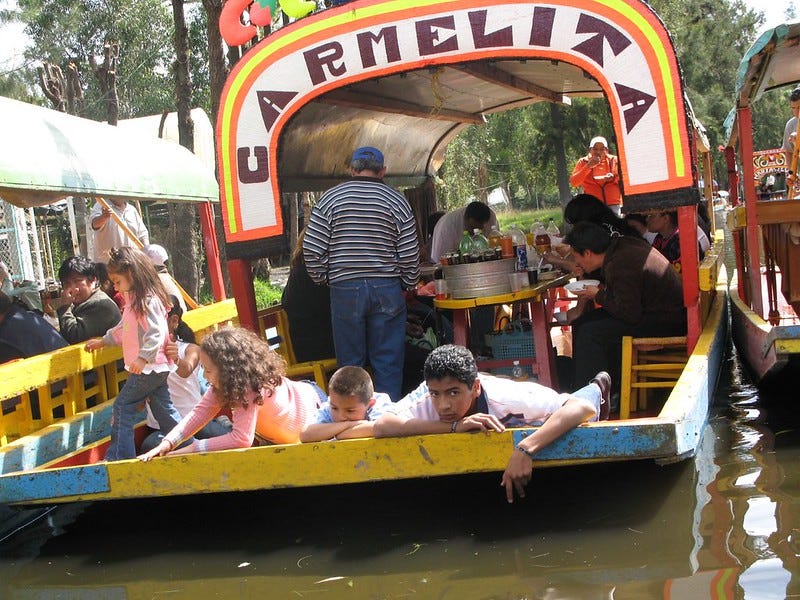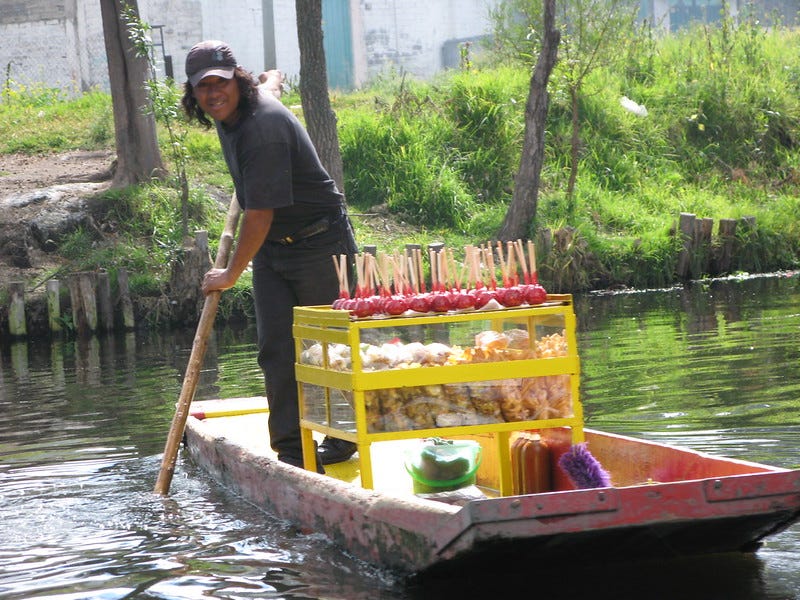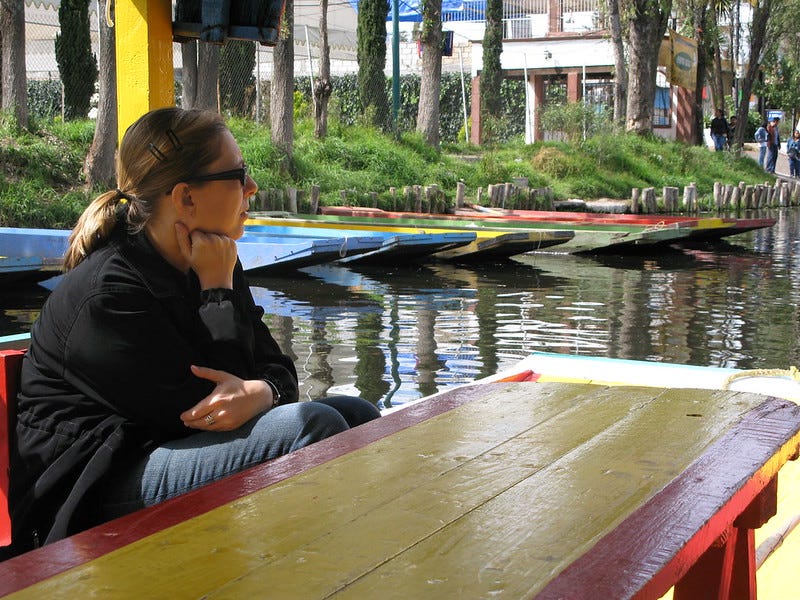Xochimilco: Mexico City's Floating Food Festival
A lazy Sunday boat ride (smithsonianmag.com - 2010)
smithsonianmag.com - 2010
It's early Sunday morning, and a mariachi band is serenading birthday celebrants in boats covered with splashes of primary-colored paint. The show is a comedy act; the band members dance, sing, wiggle their behinds and jump daringly from one rocking boat to another.
Beneath the boat canopies, wooden tables bear the weight of tubs filled with ice, bottles of beer and soda pop. A dozen adults link arms and sing along with the rowdy musicians; others snack on freshly grilled tortillas and roasted corn on the cob.
As we move past this floating festival, children riding at the back of the boats smile with enthusiasm and wave hello. I wonder if the young boy piloting our brightly painted craft has ever enjoyed such a peaceful day. Perhaps this hard-working youngster sees Xochimilco's historic floating gardens as nothing but back-breaking work. I'd like to ask our pilot about his life, but I don't speak Spanish. My long-time friend, Rebecca, who lives in Mexico, does. But as I look at her across the boat, she and our hired-driver/tour guide, Armando, look so relaxed and happy that I decide against starting what might become a difficult discussion. Besides, another vendor has edged his green and blue vessel up against ours.
A salesman jumps aboard, carrying a sample case filled with hundreds of pieces of sparkling silver jewelry. We are now riding in a floating jewelry store, and Rebecca finds the offerings too tantalizing to resist. She bargains over several pieces, ending up with a pair of delicate silver hoop earrings. Armando is not so sure Rebecca has scored the best price, but I can tell she is as pleased by the experience of successfully bargaining in Spanish as she is with the jewelry itself. I am equally pleased with our new friend, Armando, who has been looking out for us all morning—choosing a casual dock-side taquería for our cheese-stuffed breakfast quesadillas (and his goat-meat tacos), as well as a lesser-known dock-side landing where we bargained for our rental boat, called a trajinera.
More scenes drift past us: a woman cooking tortillas on a small charcoal grill propped inside the belly of a canoe. Another vendor, this time offering stuffed toys, multicolored lollipops, child-size guitars and miniature trajineras. (For the equivalent of four U.S. dollars, I choose two handmade trajineras painted in the same Day-Glo colors of our boat.) A vessel carrying young lovers gently bumps against our starboard. The boy pulls himself away from the girl's embrace long enough to flag down a floating cocktail vendor. Pesos exchange hands, and the couple floats away sipping fresh margaritas in plastic cups with rims dipped in an orangey chili powder mixture.
As we enter a side canal, the setting changes. Several vendors' boats line the banks in preparation for lunch service. Charcoal-fueled cooking stoves are heating up. Puffs of gray smoke cloud the air, making the waterway and jungle-like vegetation around it look like a scene out of "Apocalypse Now." Thankfully, the most danger we're in is from a bull terrier who growls menacingly at each passerby.
Rounding a curve, we pass waterside homes that would not be out of place in suburban Northern California— except for the businesses built on or alongside each property. One family has a greenhouse and garden shop extending from their front yard. Another home offers float-in (as opposed to drive-in) ice cream sundaes. At the edge of a rickety dock, the vendor hand-cranks flavors like mango and coconut in old-fashioned ice cream freezers.
We talk about how some 500 years ago, these wetlands were the agricultural hub of the great Aztec city of Tenochtitlan, growing food for over 250,000 residents by way of innovative "floating gardens"or chinampas. By the 1970s, the water had become too contaminated by residential and industrial pollution to be used for food crops, so local residents turned to flower cultivation instead.
In 1987 UNESCO declared Xochimilco's floating gardens a Cultural Heritage Site, and the still-murky waters are beginning to glimmer in spots. Modern residents of Mexico City can now rely on the floating gardens for a sweet smelling break from the chaos of modern metropolitan life.
On the drive back to the capital city's central Zócalo, Rebecca, Armando and I barely speak. We have settled into that comfortable quiet easily enjoyed by good friends. I am already daydreaming about the next time we'll return to the tranquil waterways of Xochimilco. Another chance to sip cold beer as we wait for delicious treats to float by...
Addition photos available at: https://flickr.com/photos/lipsticktraces/albums/72157603409290695







